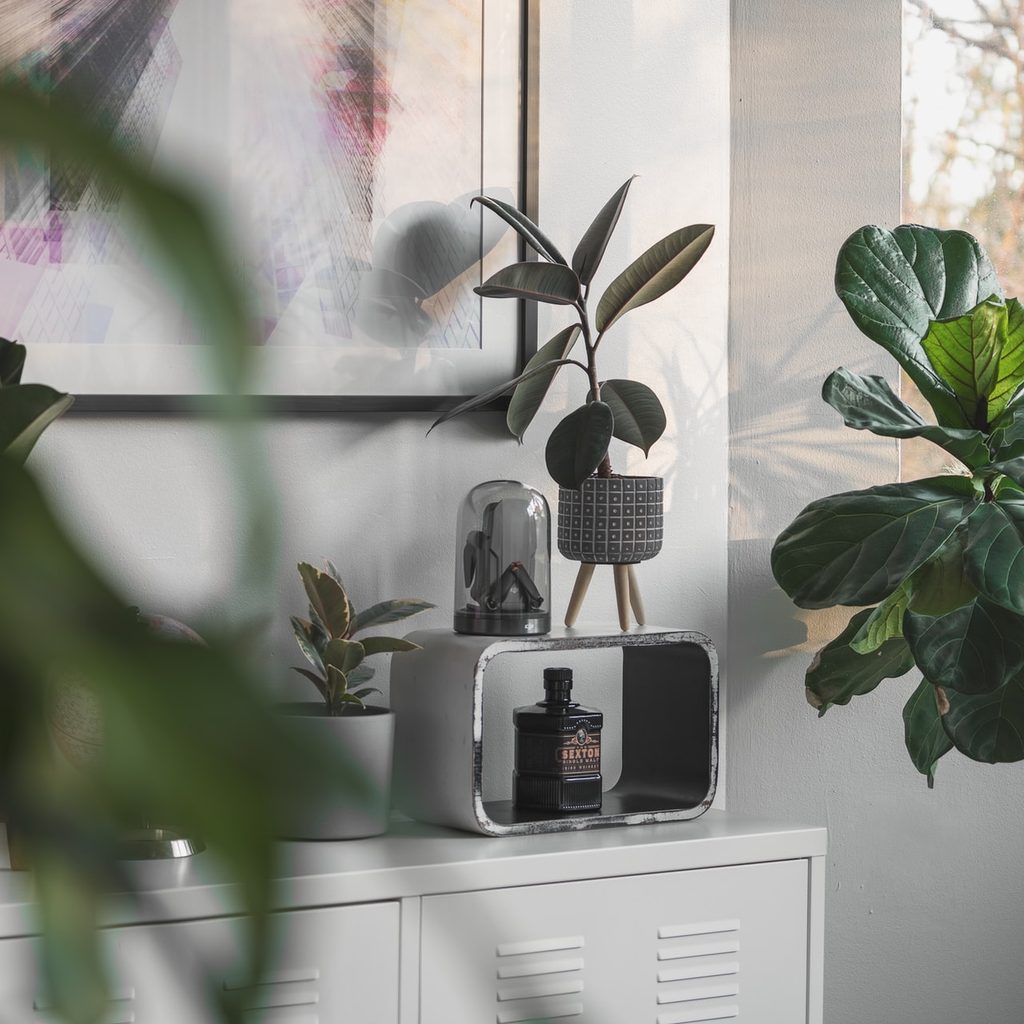There’s no denying that having a plant obsession can also improve the aesthetics of your home. Your spaces look more alive, have a better sense of calm, and the natural vibe that plants give off is welcoming. Still, how do we best arrange our plants to maximize on their style and impact within our space?
Cluster your plants
Not only will clustering your plants look better for aesthetic reasons, but it’s also better for the health of the plants. While we might not know much about their social lives, plants are social, living things that grow better when in a group. This is especially true for humidity-loving plants. They love being grouped together because they raise the humidity level around them, creating a more suitable environment for their survival. This might best be done in a bedroom, where higher humidity levels will also help you get better sleep, but you could do this in any room to create a lovely display. Just be sure to use varying levels of stands and sizes of plants to create appealing layers.

Use plants instead of flowers
There’s something special about someone bringing home a fresh bouquet of flowers; however, they never last as long as we’d like them to, and then your dinner table is bare once again. Instead, use a houseplant that’ll grow all year round. You can use plants instead of fresh cut flowers as centerpieces on tables, buffet cabinets, or even nightstands.
Have a show-stopper plant
We know huge plants are expansive, but if you can invest in one or two large plants like a fiddle-leaf fig or a palm, you’ll be able to use it as a show-stopper to anchor all the other plants in the space. This also makes it easier to cluster the plants and ensure there isn’t too much greenery on one level. It can be hard to find height in your design with smaller plants, but tall plants can bring the height while your bushier plants fill in the lower space.
The rule of three
Speaking of clustering and grouping plants, there’s a rule of three used by professional designers everywhere. Even numbers tend to look unnatural and too symmetrical, so when you are grouping your plants, try to always make it an odd number. Most of the time, the best number is three. You’ll also want to avoid grouping plants of the same general shape and size.
Think about colors
Of course, most houseplants have green foliage, but you can find many plants with leaves in different colors like purple, red, or even a dark green that almost looks black! Adding these varying foliage colors will spice up the look of your houseplant collection and even be great conversation pieces. You can also add variegated plants to add interest and variety.

Choose pots that flow
Pots for your houseplants can get expensive really quickly, so it’s understandable when a plant lover has a bunch of pots that don’t go well together. However, pots that don’t go together can be an eyesore, so it’ll be better for your aesthetic goals if you can avoid this. They don’t have to be the same pot but stick with similar colors, themes, or materials to keep things uniform. Even using all terracotta pots can be better than some green ceramic pots, a random concrete pot, and a plastic pot you found at grandmas house.
Don’t forget the plant’s needs
Plants are not inanimate objects that you can just place on a shelf. They might not be able to talk, but plants have requirements for lighting, water, humidity, and temperatures which should all be factored into your decor choices.
Vary the levels of your plants
As we’ve said a few times here, the most essential part of arranging your plants in a pleasing way is to vary the heights and levels of your plants. You can do this in many ways, including hanging plants (like English ivy) from the ceiling, putting plants on the floor, and using tables, plant stands, bookshelves, or even window plant stands as displays. This technique will ensure your plants are evenly spread out in your home and will maximize the style that your houseplants bring.
So remember, consider the plant’s needs before you place it somewhere, vary the height, size, and color of your plants, and don’t forget the rule of three. All these tips can help you achieve those Instagram-worthy houseplant goals you’ll be dying to share with your friends!


